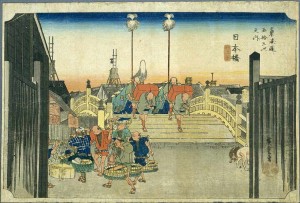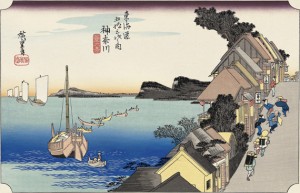With an apology to my neighbours! Somehow this ended up at the right numeric address, but on the wrong street. They were kind enough to bring it over to me.
As I’ve mentioned before, I am a sucker for all things hakata, especially in uncommon colour combinations. This is not technically true hakata, rather than being a tightly woven silk it’s a rough slubbed cotton-silk blend with the “hakata” pattern loosely woven on top, but I still love the pattern. The colours in the auction photos made the item out to be a soft, dusty sage green. I was pretty shocked when I opened up the package and found a vivid apple green colour instead, but also really happy. It’s a great colour, and will go very well with a lot of my things. The best part, however, of this obi, has to be the price. I got it for one penny!
I already have a few coordinations in mind, I just need time and weather to cooperate.































 Bebe Taian
Bebe Taian CHOKO Blog
CHOKO Blog Gion Kobu
Gion Kobu